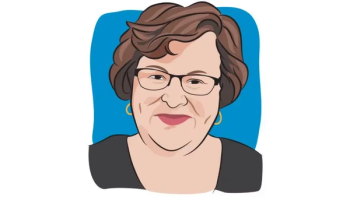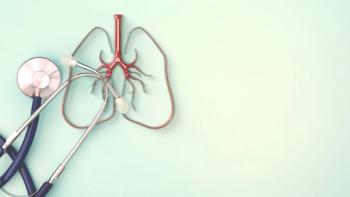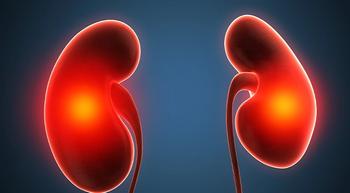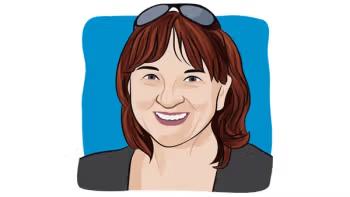Patients with hormone-receptor (HR)-positive breast cancer who conceived during a break from receiving endocrine (hormone) therapy can safely breastfeed, according to findings from a study, presented at the 2024 European Society of Medical Oncology (ESMO) Congress.
The POSITIVE trial included 518 patients who were 42 years old or younger with HR-positive, stage 1 to 3 breast cancer who desired to become pregnant. Among 317 patients who had live births, 196 patients breastfed, of which 66.3% had breast-conserving surgery including contralateral (removal of a healthy breast after the removal of the first) breast only (69.2%), from both breasts (29.2%) and from the affected breasts (1.5%). Of the 196 patients who breastfed, 33.6% had unilateral surgery (removal of one breast to treat cancer).
Study Highlights:
- The POSITIVE trial found that patients with HR-positive breast cancer who conceived during a break from endocrine therapy can safely breastfeed.
- Successful pregnancies were observed in 85.7% of patients younger than 35 and 76% of patients aged 35 to 39.
- There was no significant difference in the rate of tumor recurrence between patients who breastfed and those who did not (1.1% versus 1.9%).
In all patients within the trial, breast-conserving surgery versus unilateral mastectomy occurred in 77.8% of patients versus 45.2%; 67.6% were 35 years or older versus 55.7% who were younger than 35; and 66.4% with live births before POSITIVE were nulliparity (person who hasn’t given birth but was once pregnant) versus 48.5% who were parity.
Pregnancy status was reported in 497 patients, with 74% being pregnant at least once during the trial.
Successful pregnancies were observed in 85.7% of patients who were younger than 35 versus 76% for those who were 35 to 39 years old. Overall, 43.3% of patients used assisted reproductive technology during the trial.
The median duration of breastfeeding for the first child was 4.4 months. Overall, 37.1% of patients breastfed for six months or more, 12.8% for 12 months or more and 1.5% for 24 months or more. It was noted that patients had to restart endocrine therapy treatment within two years.
At a median follow-up of 41 months, the rate of first invasive tumor recurrence (BCFI; return of cancer) at 12 months in those who breastfed was 1.1%, and for those who did not, it was 1.9%. The BCFI rate at 24 months was 3.6% in those who breastfed versus 3.1% in those who did not.
“This is the largest prospective evaluation of breastfeeding frequency, pattern and impact on BCFI in a cohort of young patients with HR-positive early breast cancer,” Dr. Fedro Peccatori, director of the Fertility and Procreation Unity in the Division of Gynecologic Oncology in the Department of Gynecology at the European Institute of Oncology in Milan, Italy, said during the presentation. “These data underline the interest of young breast cancer survivors in breastfeeding and reinforce the notion that breastfeeding counseling should be incorporated into their individualized support.”
Patients received 18 to 30 months of endocrine therapy after surgery, stopped treatment and were enrolled within one month. A three-month washout period was enforced. Patients then proceeded for up to a two-year break to allow for conception, delivery and potential breastfeeding. At the end of the two years, patients were to resume completing their endocrine therapy and partake in follow-up for up to 10 years.
During the study, 44 patients had their treatment interrupted due to a breast cancer event (return of cancer or an onset of symptoms associated with the cancer), although it was within the safety threshold of 46 events.
As of the database lock, 63.8% of patients had a live birth, and 86.1% had at least one pregnancy. For patients who reported one pregnancy, the most common complications were hypertension (high blood pressure) or preeclampsia (serious blood pressure condition during pregnancy; 3.8%), diabetes mellitus (2.4%) and placental abnormalities (1.6%). Overall, 7.9% of babies born had low birth weights and 2.9% had birth defects.
“I think POSITIVE will open the door for more young women to say, ‘I can take a break and try to become pregnant’. At least in the short term, it appears safe. Hopefully, in the long term, we’ll have data that appear safe from a prospective standpoint,” Dr. Anna H. Partridge and Dr. Eric P. Winer, noted during an interview with CURE®’s sister brand, CancerNetwork® in 2023.
Partridge is the vice chair of Medical Oncology; founder and director of the Program for Young Adults with Breast Cancer and director of the Adult Survivorship Program at Dana-Farber Cancer Institute in Boston. Winer is chair of Breast Cancer Research at Dana-Farber Cancer Institute and professor of medicine at Harvard Medical School, both in Boston.
For more news on cancer updates, research and education, don’t forget to subscribe to CURE®’s newsletters here.





